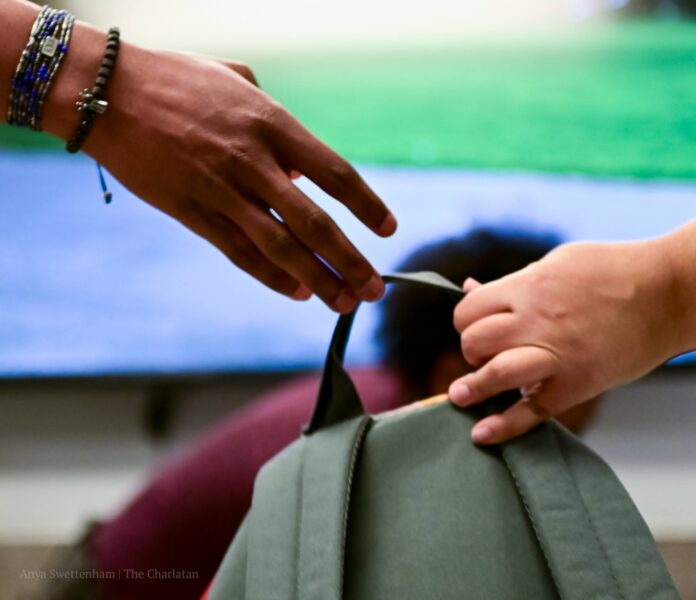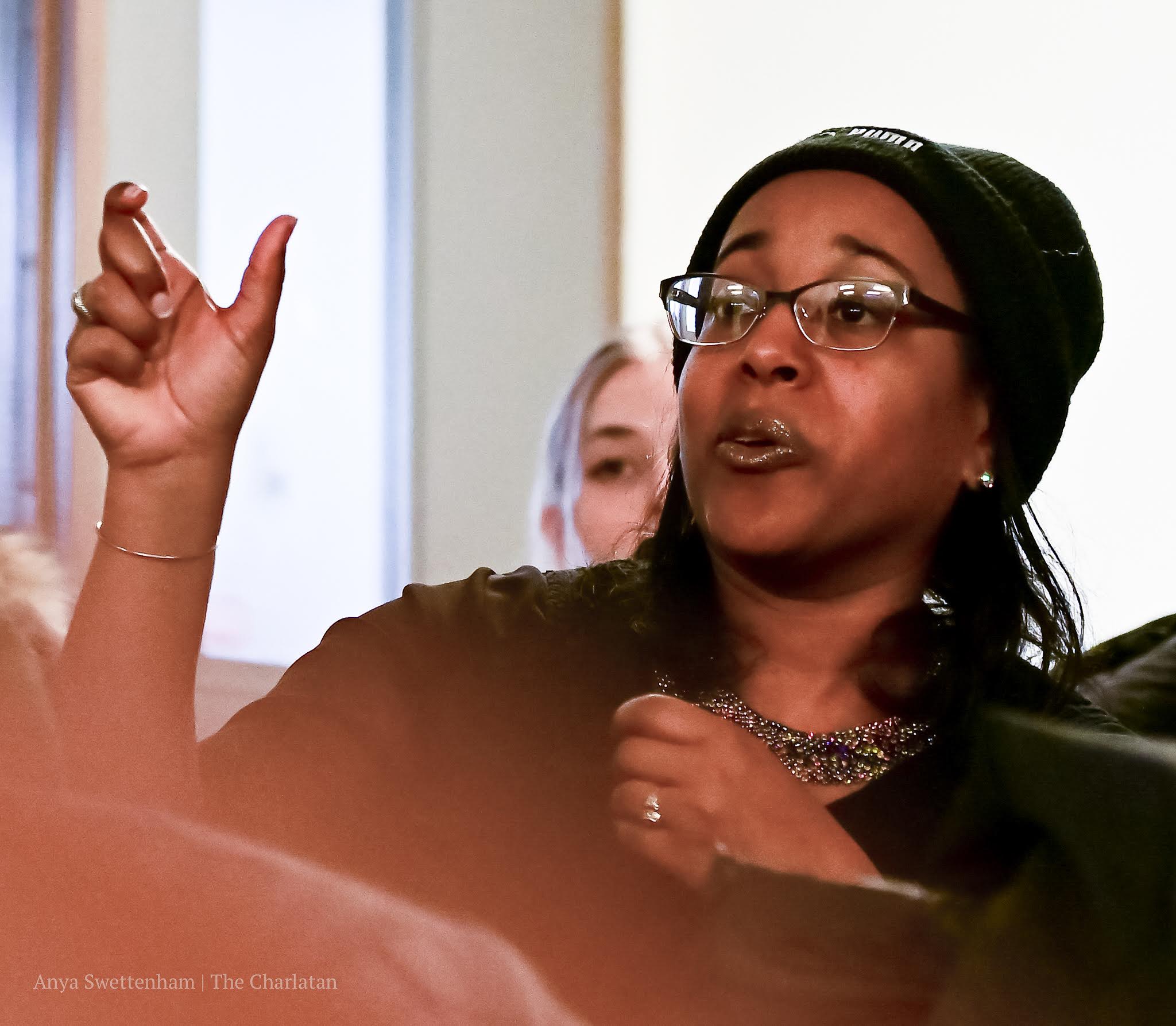
WARNING: This article contains sensitive topics, including mentions of anti-Black racism. Those in need of support can contact the Mental Health Crisis Line: 613-722-6914 (within Ottawa) and 1-866-996-0991 (outside Ottawa), the Ottawa Distress Centre Crisis Line: 613-238-3311, or the Youth Services Bureau 24/7 Crisis Line: 613-260-2360 or 1-877-377-7775 (toll).
More than 30 people crammed inside a Carleton University classroom to watch four short skits, all of which shared the same goal: to make the audience uncomfortable.
The first skit, Dress Coded, depicted a high school principal scolding three Black students, labelling them as “thugs” and accusing them of dressing like they were “from the hood.” The altercation escalated, with the skit ending right before the students were taken to the police station.
Then the scene reset, and the actors ran through the skit again. When the principal scolded the students once more, audience member Adrielle Lisis stood up and entered the scene as the principal’s daughter.
“Mom,” Lisis said, her character’s voice laced with childhood innocence. “What’s ‘the hood’?”
Dress Coded was one of four student-written skits in Anti-Black Racism, Gender and Class: Through the Arts, a Theatre of the Oppressed presentation performed at Carleton on April 4.
Theatre of the Oppressed is a theatrical art form that promotes social and political change. Audience members can participate as “spect-actors,” where they can enter scenes, improvise and transform the show’s outcome.
Carleton’s departments of sociology and anthropology, English, African studies and feminist studies hosted the event alongside the Ottawa Catholic School Board (OCSB). Carleton students in the third-year course “Race, Gender and Class Intersectionality Through the Arts” collaborated with OCSB students enrolled in the Grade 12 course “Drama in the Community.”
The students researched, wrote and performed Theatre of the Oppressed skits addressing different social issues rooted in anti-Black racism.

Dress Coded represented the disproportionate impact of Canadian school dress codes on Black youth.
“You can’t explain [anti-Black racism] or make it make sense to a kid, so it shouldn’t make sense to adults,” said Lisis, a political science and communications student at the University of Ottawa.
After the performance, she told the Charlatan she found participating in the Dress Coded scene important.
“In life, you can do two things,” she said. “Either you do something or you don’t.”
Sarah George, the “Race, Gender and Class Intersectionality Through the Arts” instructor, said spect-actors are central to the community engagement aspect of the course.
“It allows the audience to not only watch and hear the students, but to actually get up and de-escalate the situation,” she said. “They can essentially practice for maybe what they could do if they found themselves in that situation in real life.”
In each skit, four or five spect-actors entered to confront the situation’s oppressor. In addition to Lisis as the principal’s daughter, Dress Coded saw spect-actors portraying a student bystander, a high school secretary and the police officer’s manager.
In the second skit, Balls and Chains, police officers confronted two Black teenagers on their way to play basketball and demanded to search their backpacks. Set in a neighbourhood about to be overtaken by luxury condos, the skit addressed gentrification and racial profiling.
“We wanted to acknowledge that oftentimes we associate Blackness with poorness,” said Dula Deb, a fourth-year Carleton social work student who portrayed one of the police officers.
Deb pointed to Riley, one of the skit’s racially-profiled characters, as an example. The officers did not believe Riley when she said she and her mother were about to move into one of the luxury condos.
“With class and race, the two can influence one another,” Deb said. “But it doesn’t always mean you’re marginalized in both ways.”

Echoes of Identity showed a Black student accused of stealing while interviewing for a job at a Loblaws. Deb said the scene addressed the systemic issue of underemployment in Black youth.
To examine how race and class affect perceptions of high school students’ potential, Lower Your Expectations depicted two simultaneous high school guidance counsellor meetings. In the first, a guidance counsellor encouraged a white student with average grades to attend university, and in the other, a different counsellor tried to persuade a Black student with excellent grades to give up her dream of attending medical school.
After spect-acting as the Black student’s parent in Lower Your Expectations, Lisis told the audience a story about her own experience.
“My [high school] guidance counsellor at the time […] just did not believe I’d succeed in university,” she said. “But now I’m about to finish this August.”
Lisis later told the Charlatan that each skit felt “very personal” to her.
“It was almost like I knew too much,” she said. “I felt very obliged to be a part of it as well.”
“I felt like if these things were being played in front of me and I played them differently now, maybe I’d have a different outcome.”
At the end of the event, George told the Charlatan she hoped the audience felt “very uncomfortable.”
“I’m hoping they took away the gravity of anti-Black racism in Ottawa for youth, and I’m hoping it encouraged people to think,” she said. “As a city, we have a responsibility to address anti-Black racism, but also to engage with that community.”
Lisis also said she feels a responsibility to play a part in fighting oppression.
“I somehow feel like everybody should participate, and so if I’m not, then I kind of feel like I’m not doing my part,” she said. “That’s what speaking up is about. It’s about saying the things that people are not saying out loud.”
Featured image by Anya Swettenham/the Charlatan.





